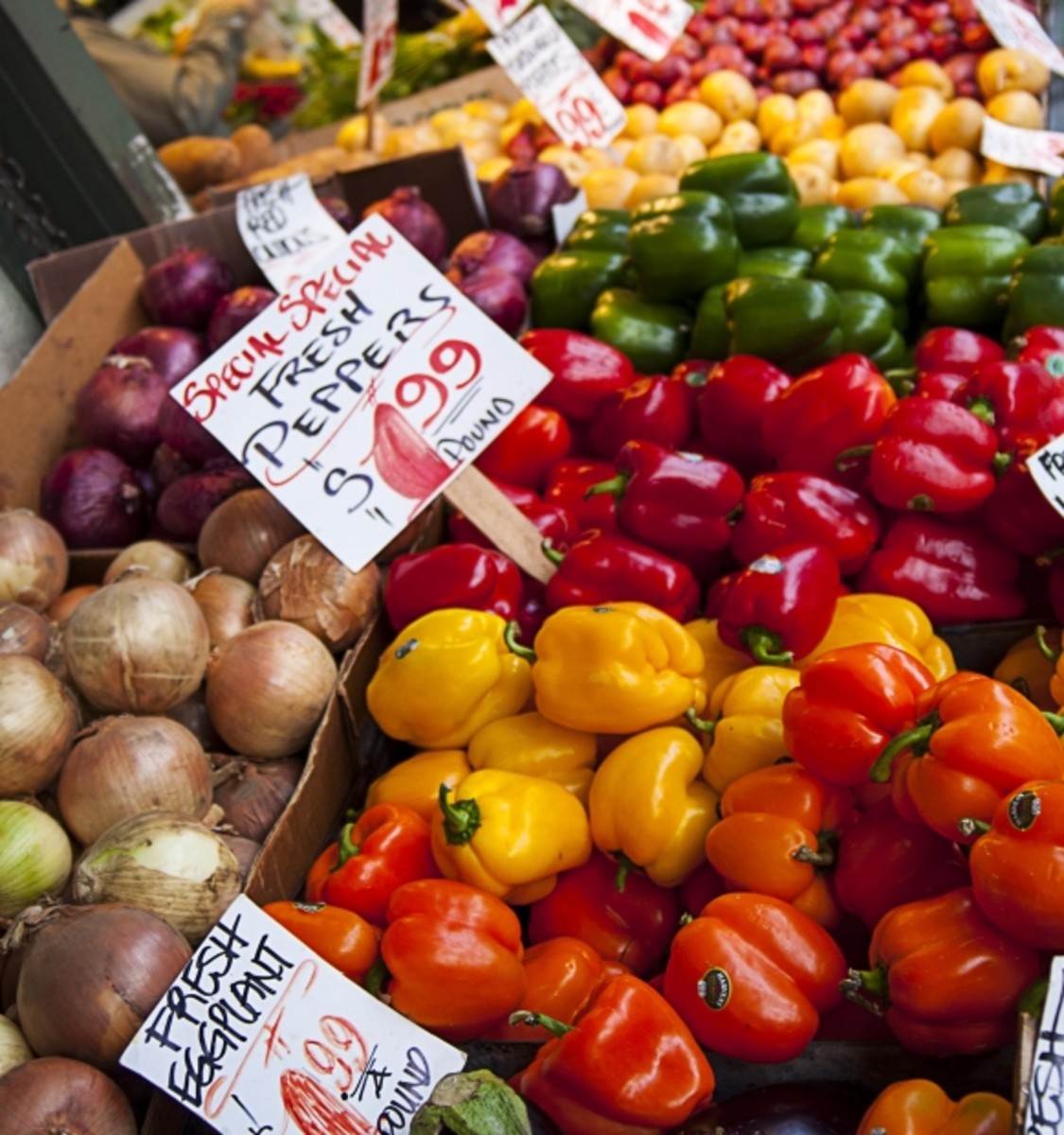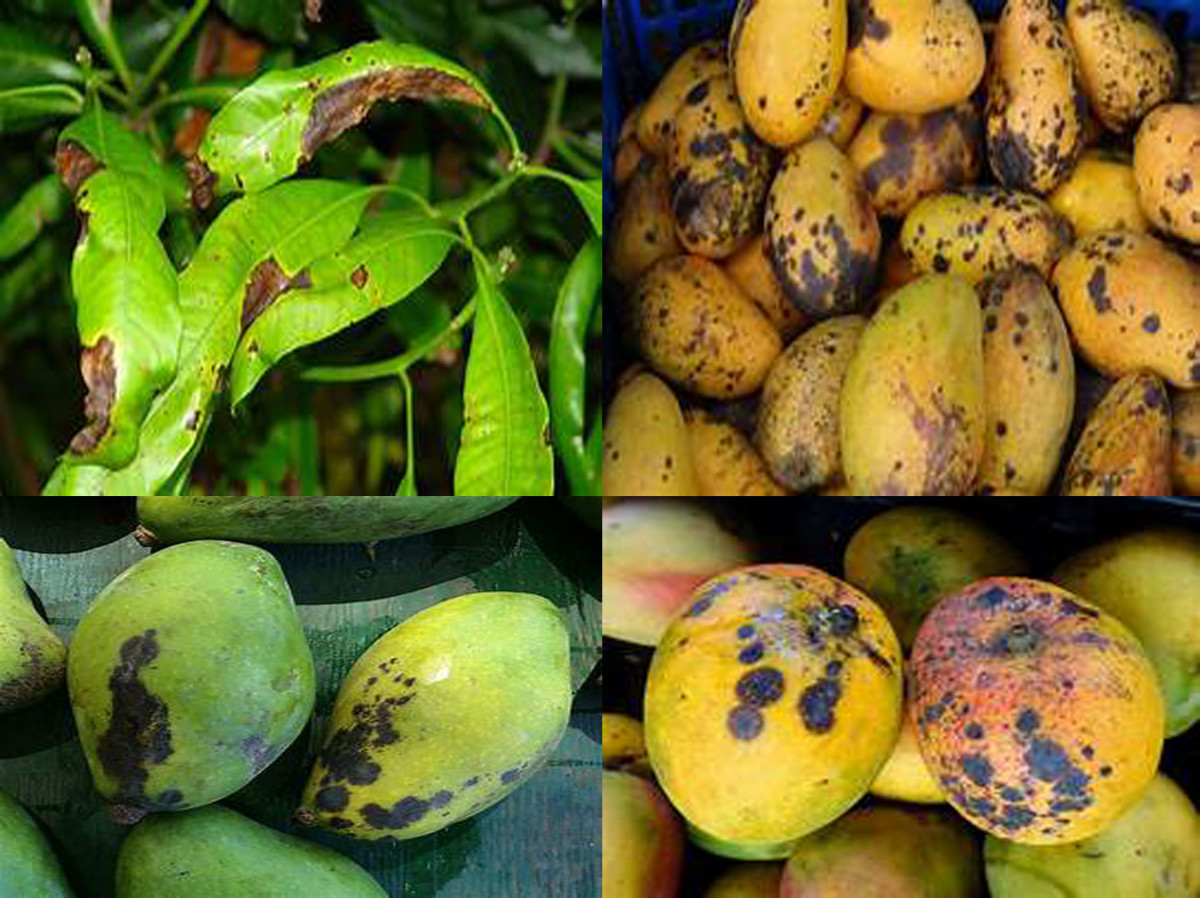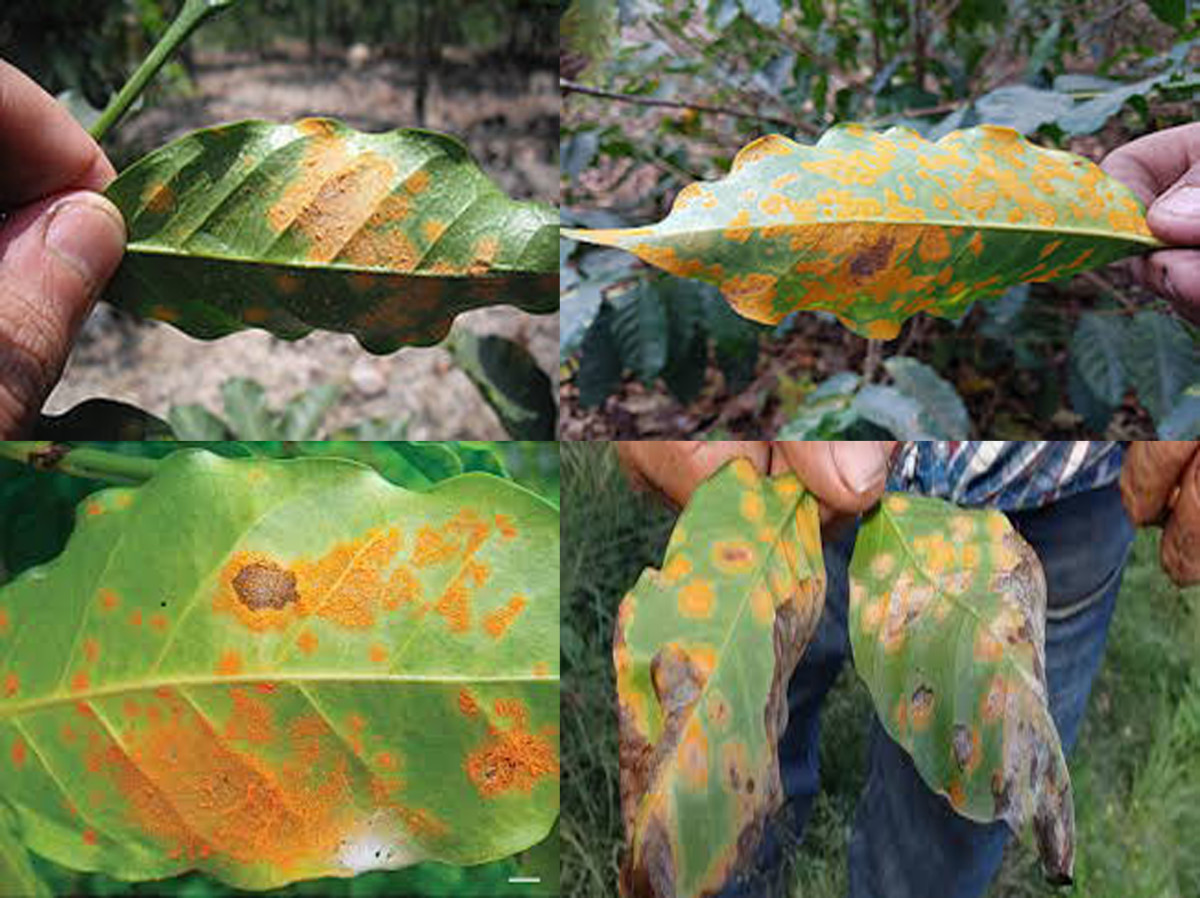Tomatoes; from the field to the table!
Here is a hub about everything related to tomatoes, my favorite vegetable-fruit. It somehow seems odd to call a tomato a fruit as it usually isn't associated with a dessert or treated like an apple or strawberry. On the other hand I have been known to take a beautifully red, nice and ripe tomato off the vine, wipe it on my shirt and eat it right there and then in the garden; a firm jewel of a tomato, filled to the brink with sunshine--- like an apple--- therefore a fruit.
To really figure out if a tomato is a fruit or vegetable, you need to know what makes a fruit a fruit, and a vegetable a vegetable.
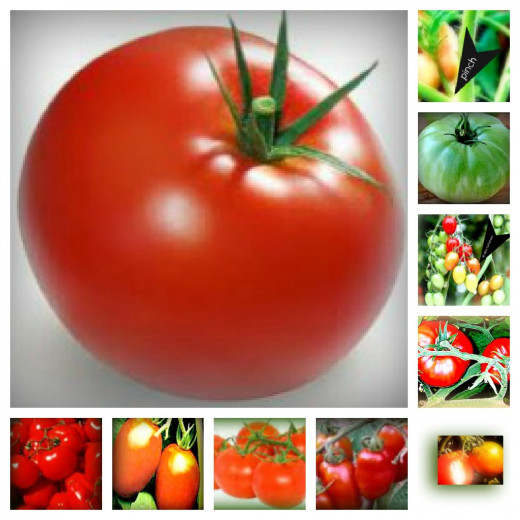
According to the Online Oxford Dictionaries (the worlds most trusted dictionary, so they tell us)
Is a TOMATO ( also called Lycopersicom esculantum, or Lycopersicon esculentum) a fruit or a vegetable?
The confusion about 'fruit' and 'vegetable' arises because of the differences in usage between scientists and cooks. Scientifically speaking, a tomato is definitely a fruit. A true fruit grows in the base of the flower, and contains the seeds of the plant......
As far as cooking is concerned, tomatoes should be called 'vegetables' because they are used in savory rather than sweet cooking......
So, the answer to the question is that a tomato is technically the fruit of the tomato plant, but it's used as a vegetable in cooking.
the link to the total dictionary write up can be found here ===> http://www.oxforddictionaries.com /page/199
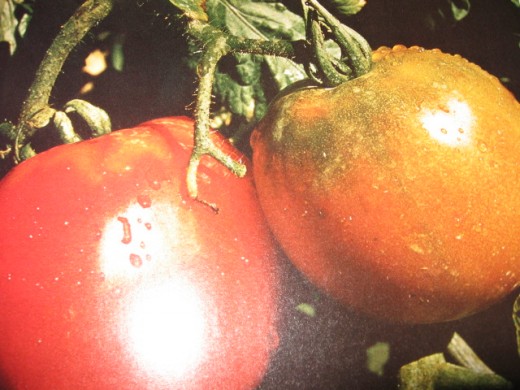
Over the many years that I've been gardening I've grown a wide collection of tomato varieties. Some were better suited for the area and soil conditions in my gardens, however just about all of them were good choices. Some plants grew tomatoes more abundantly then others and some were more wondrous than others.
The first seeds to get planted in my little greenhouse are always the tomatoes and from then on it becomes a count down until the summer's first warm red and luscious tomato can be picked off the vine and eaten right there and then, with dirty hands and all.
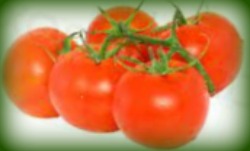
I love tomatoes so much that I'm ashamed to admit that for years I used to fall for the many new types of hybrid seeds that were advertised, ( you know, the ones that grow to be the size of watermellons). I was probably the only person that got suckered in and would order them. Then try to grow them all. (I know it can be done, it is and was possible to grow them huge, even in the olden days. I had an old photo of my Gramps standing beside his staked up tomato plants in his garden in Hungary, the tomatoes were the size of a small child's head--- he had them resting on small wooden crates to relieve the weight off the plant vines).
I have tried seeds that promised to grow tomatoes the size of a cabbage. Other seeds assured to grow tomatoes that would weigh in at 2 pounds or more each, on plants that would grow ten to twelve feet tall and supply a family of 4 with all the tomatoes they could possibly eat. (In reality it only reached 6 feet in height with about a dozen normal sized, although not too bad tasting tomatoes). I even sent away for the plant they called 'T&T Monster' it was supposed to grow ginormous tomatoes. It did grow really large tomatoes but I don't think the four that stayed on the vine made it up over 3/4 of a pound each, not the super-sized 3-4 pound-ers the company had promised. (thank goodness, because even with thick braces the plant could barely hold itself upright.
All in all I can say is that most of these huge tomatoes were not all that great tasting specimen... more watery, gritty and 'slushy' (if you know what I mean), but then I guess the fun was not so much in the taste as growing these huge humongous monster tomatoes.
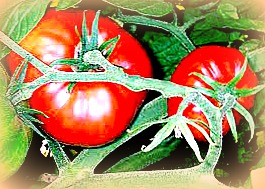
In my opinion in my little patch of earth the best tasting fresh eating tomato have always been the 'Little Bonny Best' or the 'Big Beef'. Some of these did grow big enough to fill my hand but not so big that I needed a 'jack' to lift them. (the few that I did weigh came up to 300 grams, slightly over 1/2 pound)
For canning (spaghetti sauce & salsa) plum tomatoes are the best as they produce lots of meaty innards and fewer seeds. Here too I've tried many different types but I have had the best luck with 'PlumDandy'. I always seem to go back to that seed as I found that the tomatoes always start and ripen uniformly.
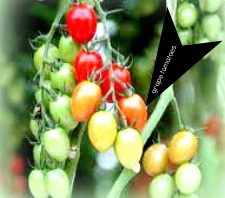
For the past 5 or 6 growing seasons for the early 'I-can't-wait-to-have-my-first-salad-from-the-garden' tomatoes I've planted a couple of the cherry or grape tomatoes plants in planters on the deck which are in full sun from early morning until evening. The soil in these planters warms up so much faster than the soil in the garden and that gives me a week to ten day jump on the garden crop and probably 2-3 weeks on the early full sized ones. I haven't been able to totally narrow it down to the perfect seed yet as I'm still trying out different ones but last years grape-tomato called 'Sunny Delights' sure were a winner. Once the clusters of uniformly shaped tomatoes started to ripen they kept on producing twenty to twenty five tomatoes every day for most of the growing season. The plants had to be stacked up in the planters because they became so top heavy. I moved the planters against the railing so I could tie them up for more stability. (rem: tomato plants in planters need daily watering and also need extra feed every couple of weeks [I make my own organic fertilizer 'tea' from compost etc.]) {If you're interested in the compost that I make and use here is a link to my hub http://zsuzsybee.hubpages.com/hub/Making-and-Using-Compost }
Last year I was given some heirloom seeds by a friend. He said they were called 'Yellow Bliss'. These produced the most beautiful bright orange-yellow tomatoes the size and shape of a good sized tangerine. Wow, not only were these the most gorgeous colour, but they were the sweetest, mmm, mmm, mmm, probably the sweetest tasting tomatoes I've ever tasted. (definitely closer to a fruit than a vegetable).
I saved a bunch of those tomato seeds for the first time last year so hopefully they will work out fine again this year.
An interesting bit of knowledge:
The sweetness of fruit and vegetables are measured in sugar brix units.
The average cherry-tomatoes can measure anywhere from 10 to 12 brix units, and the regular full-sized tomato ranges in the 6 to 8 level. The low/no acid yellow tomatoes can measure from an11 all the way up to 15 brix.
A tomato is made up mostly of water and the tomato vine really relies on consistent and abundant moisture from the soil so they can produce perfect acid and sugar balanced tomatoes. Inadequately watered plants will have stunted vine growth and will only produce small, dry and flavourless fruit.
Tomatoes prefer a good draining sandy loam with a pH level of between 6 to 6.9. To prepare a tomato patch loosen up the soil 20"-24" deep. Add in lots of organic matter such as compost, leaves, peat-moss etc you can also add in some well aged manure mixed in with some coarse sand for good drainage. Tomatoes also love some additional organic material during the growing season.
To keep an even moisture level in the soil I cover my tomato roots with a 3" / 7.5cm layer of medium to fine wood chip mulch. Rather than pull back the mulch every couple of weeks for the additional feed I prepare an organic 'tea' and just use the watering can to get the nutrition right to the plant roots. (I prefer to use fine to medium wood chips/shredded bark to the big chunky stuff as it gets rotor-tilled into the soil every fall).
For the first time last growing season I tried the black garden cloth on one row of tomatoes, it kept the weeds down to a minimum which is a plus but it is quite expensive. I'm going to try the plastic film this year (sold by Veseys here in Canada) This is supposedly going to increase the production, I assume because the soil temp will stay more even.
As I grow four long rows of tomatoes every year I will try the film on one, garden cloth on one and the other two I will keep in my traditional way with mulch etc. This way I'll be able to compare. (I will add my results in the fall)
Tomatoes love heat but prefer even temperatures. 7-8 hours of sun daily with temperatures up to 25°C/77°F and night-time lows of 12°C/55°F is ideal.
Growing tips:
Canadian growing seasons are shorter than what tomatoes need, this is my method here in South Western Ontario:
- I start seeds indoors five weeks before the last known frost using my own organic growing medium. (Here is the link to the hub about my growing medium if you're interested http://zsuzsybee.hubpages.com/hub/How-to-make-your-own-growing-medium-andor-potting-soil )
- I soak the seeds overnight to soften the hull and speed up germination.
- After all danger of frost has passed (in my neck of the woods somewhere in the beginning of May) I set the plantlets outdoors during the day for a week but take them back inside overnight. Before planting I let them adapt outdoors for an additional 2-3 days including overnight in the garden. This way the small plants have a better chance to adapt to the windy spring conditions. I found that this allowed them to grow and develop good roots while the air is cool and get ready for strong production growth once it warms up.
- When planting I set each of the plantlets in deep enough to be almost flush with the bottom set of branches. This will give them better grips so that the strong spring winds don't topple the plants out of the ground. If per chance plants gets away from me and become too leggy (too tall) I bury part of the stem on a horizontal slant. The buried stem will grow additional roots which in turn will strengthen the plant.
- I remove all first flower sets from the tomato plants until they reach at least 1 foot/25cm in height. This allows for a really good root developement which in turn makes for healthy plants with nice 'full heads' of leafs.
- Even though it's tempting to plant the tomatoes close (especially when they're such small little plantlets to start with) I always have to keep remembering that the Tomato plants hate competition. Each plant needs to have enough space so it can extend its leaves without touching the neighboring plants.
- Let me pass on one of my gramp's tricks: when or if cutworms attack young tomato plants (cut them off at soil level) they can be salvaged by putting the stems into a jar of tepid water indoors. (rem: to give them new fresh cut ends) The stems will sprout new roots along the sides of the stem and the newly rooted plants are usually ready to be replanted outdoors within a couple to three weeks.
- I cage, stake and tie up the tomato plants a couple of weeks after they're planted. ( as I never seem to have enough cages on hand, I also use 4' Bamboo poles, available cheap at most garden centers )
- I have irrigation hoses set up so that they water the plants from below. But every so often I will give the whole plants a thorough misting being careful not to splash soil up onto the leaves, flowers and eventually the tomatoes. It's important not to let the roots dry out so I water daily especially once the tomatoes are startig to form. As with all fruit and vegetables if the tomatoes are too dry for too long and then get too much water there is the danger of their skin splitting.
- For the first month I give the tomato plants extra 'feed' weekly. I water around the roots carefully with an organic compost and manure 'tea'.
- The fourth week just before I cover the whole tomato rows with a 3-4" thick layer of wood chip mulch I give the plants a deep watering by adding some dry kelp (available at garden centres) to my compost 'tea'. (obviously the film/growing cloth has to be stretched out right at planting time)
- Once the mulch is in place I cut back on the extra feedings to just once every two weeks. This continuous feed 'tea' needs to be low in nitrogen as by now the plants should have developed just about all the leafs they need and should start to concentrate on flower and fruit developement.
- Once the plant starts developing its flower bunches I pinch out the new little leaves growing in the joint of two branches. These suckers will not grow any fruit and just take energy away from the rest of the plant. At the same time I also pinch off the lowest leaves off the bottom of the plants. These are the first set of leaves the plantlets grew and by now they usually start to yellow and brown as the sun can't reach deep into the plant.
- So that my tomato plants don't get lonely I add basil and garlic in-between the rows also. It has been said that companion planting both improves on the flavour of the tomatoes and also helps to keep pest away.
Once the tomatoes have been picked they are at their best if kept at room temperature as they tend to lose their flavour when stored in the fridge. At the end of the growing season when there is very little chance of ripening the green tomatoes on the vine anymore I place them into large brown paper bags with a couple of yellow bananas for a few days. The green tomatoes will ripen, redden and soften however they will not taste as great and have a mealy texture still super for cooking etc.
Mind you I only ripen the large green tomatoes if I have too many to use up as breaded fried tomatoes, as salsa and as tomato relish. The smaller sized ones along with the green grape and green cherry tomatoes get pickled. (if you're interested here is the link to the recipe) http://zsuzsybee.hubpages.com/hub/Green-Cherry-Tomato-Pickles-Easy-to-make-pickles
Not only are tomatoes one of the most versatile fruit/vegetables used extensively in the culinary world, especially Italian cuisines, they also contain Vitamins C and A. They also contain an antioxidant called Lycopen which is of great benefit to the heart, helps prevent prostate cancer and is also said to protects skin against harmful UV rays.
Canadian Food Guide
According to Health Canada (www.healthcanada.gc.ca/cnf) the nutritional value of 1 raw tomato, Weight 123(g) Energy 22(kcal) Energy92 (kJ) Protein 1 (g) Carbohydrate 5(g) Total Sugar 3 (g) Total Dietary Fibre 1.5(g) Total Fat 0.03 (g) Calciumn 12 (mg) Iron 0.3 (mg) Sodium 6 (mg) Potassium 292 (mg) Magnesium 14(mg) Phosphorus 30(mg) Vitamin A 52(RAE) Beta-carotene 552(mcg) Lycopene 3165(mcg) Folate 18 (DFE) Vitamin C 16(mg) Vitamin B12 0.02 (mcg)
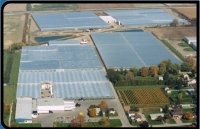
Ontario Greenhouse Growers!
Not just Tomatoes, but here are some really interesting facts:
Leamington has become the greenhouse capital of North America for a variety of reasons. Started by immigrants to the area after World War II, greenhouse production has become a billion dollar industry. Principal crops include tomatoes, cucumbers and peppers. Greenhouse floriculture is also important. Leamington and neighbouring Kingsville have the largest concentration of greenhouses in North America with over 1500 acres "under cover".
For more information contact the Ontario Greenhouse Vegetable Growers Association.
Greenhouse Produce Growing Methods:
- greenhouse tomatoes are pollinated the natural way using bumblebees whose hives are scattered all over the production area. Cucumbers, unlike tomatoes, are not pollinated (hence the seedless nature of these crisp, 100% edible veggies)
- greenhouse cucumbers and tomatoes are grown with great care in controlled environments ensuring a high quality product with a superior shelflife. Because integrated pest management is used (good bugs eating bad bugs), Ontario's hydroponic crops are virtually organic.
- Ontario producers are so close to the markets they serve, that shoppers can get safe, fresh cucumbers and tomatoes in as little as 24 hours.
- Ontario hydroponic, or greenhouse, cucumbers and tomatoes are grown in a nutrient rich water solution. Because growers limit the use of pesticides through biological controls, produce is safe, natural, and vine-ripened.
Leamington, the Tomato Capital of Ontario Canada
Some of my other gardening hubs
- Chickens in the City, in Suburbia or in the Country;...
There is very little as useful, satisfying and fun as raising a small backyard flock of chickens. Not only can a happy, productive flock of laying hens become pets but they can also earn their keep by supplying fantastic tasting fresh eggs. ... - Easy To Make At Home Insect/Bug Repellent!
I read somewhere a long time ago that whatever ailments there are on our earth the cures for them are also here. Now I might be taking that statement out of context but as far as I'm concerned flying Sherman-tank sized mosquitoes, ticks and the... - How To Select A Perfect Veggie Garden Site!
I find gardening and growing anything thoroughly exciting, challenging and satisfying because every aspect of it can bring something new to discover. Gardening is also a great activity that benefits body... - How To Grow 10 Healthy Salad Greens!
First glance at that title I can hear the groans from far and wide “…not another article on how healthy greens are ” However it needs to be said over and over again, needs to be shouted from the roof... - How to grow Lavender!
My all time favorite garden plant is the Lavender. It is not just a great color in between the other perennials but it has this heavenly scent that I just can’t get enough of. I have four different types growing in the flower beds under the... - Making and Using Compost
Home style composting is not at all a new invention. Yesteryear if it didn't go into the pig bucket it went into the big pile at the farthest corner of the yard or garden. In the past everything had its uses. ... - How to make your own growing medium and/or potting s...
This is an easy and fun DIY project, not a clean and tidy one but if you’re a gardener you're already mucking around in the dirt anyway so it’s just a little side step to mix your own ‘blend’. The...

Tomato Movies!
Attack of the killer tomatoes! (1978)
A group of scientists band together to save the world from mutated tomatoes that KILL!
Green fried Tomatoes! (1991) It tells the story of a depression-era friendship between two women, Ruth and Idgie, and a 1980s friendship between Evelyn, a middle aged housewife and Ninny, an elderly woman who knew Ruth and Idgie.
Rotten Tomatoes: a website devoted to film reviews, information, and news about movies etc



